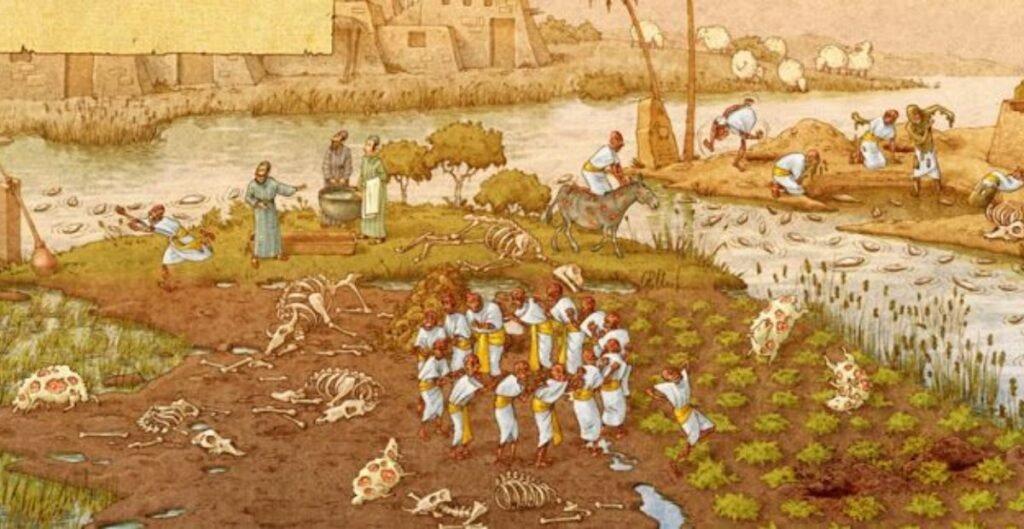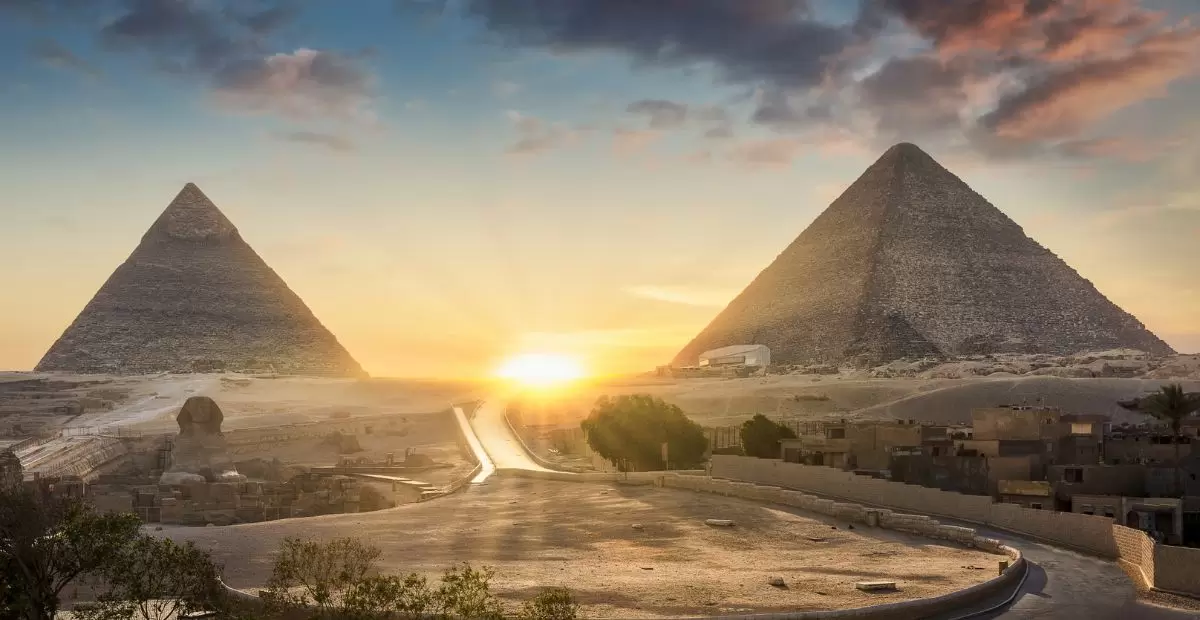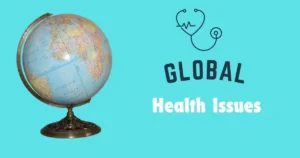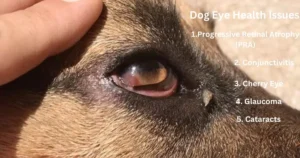Sand, the ubiquitous granular material found across deserts and shores, plays a double part throughout mankind’s set of experiences. Sand has been cherished for its usefulness in construction and picturesque landscapes, but it has also posed serious health risks to ancient civilizations, particularly the Egyptians.
Do you know why sand was a health threat for Egyptians? Well, let me tell you. Sand may seem harmless, but it poses a health threat for Egyptians. Curious to know why? Keep reading to find out how something so common could turn into a health threat for Egyptians.
Sand posed a big health threat for Egyptians. When it got into their homes and food, it caused infections and sickness. The sandy winds carried tiny particles that irritated their lungs, leading to breathing problems. Moreover, sand could contaminate their water sources, causing diseases like diarrhea.
The Impact of Sand on Respiratory Health
Sand can be terrible for your health. When you breathe in the sand, it can be uncomfortable for your lungs. Sand can get into your throat and nose, making it hard to relax. This can cause hacking and wheezing, making it difficult to try to play or do practices you appreciate. In this way, it’s basic to keep away from dusty places where there’s a lot of sand flying around to keep your lungs strong.
If you’re not careful around sand, it can cause enormous issues for your well-being. Sometimes, when the breeze blows, it conveys pinches of sand with it. These bits of sand can go into your lungs and cause defilement. This can make you feel cleared out and weak, and you could have to stay in bed for quite a while.
Sand as a Source of Infectious Diseases
Sand can be a fine carrier of microbes that cause illnesses. At the point when sand gets blended in with water or food, it turns into an ideal, favorable place for destructive microbes and infections. Imagine playing in the sand on the ocean side and then unintentionally eating a sandwich with sandy hands. Those small grains could convey microbes that you wipe out.
Indeed, even in antiquated times, Egyptians confronted the risk of irresistible illnesses from sand. Since sand could get into everything—their homes, food, and water, it was difficult to keep away from it. Individuals would ingest or breathe in sand particles conveying microbes, prompting ailments like looseness of the bowels, stomach diseases, and respiratory issues.
What are the top 5 causes of death in Egypt?
Heart Disease
Heart disease is the leading cause of death. It happens when your heart doesn’t function admirably, and it’s frequently a result of things like terrible food and insufficient activity.
Stroke
A stroke resembles an unexpected assault on your cerebrum. It’s one more central justification behind passings in Egypt. In some cases, it happens because your blood can’t stream right to your cerebrum.
Respiratory Diseases
These are illnesses that make it hard for you to breathe, like a bad cough that won’t go away. They’re normal in Egypt, given things like grimy air and smoking.
Cancer
Cancer disease is the point at which your body has awful cells that outgrow control. It can occur in various parts of your body, like your lungs or your stomach. Tragically, many individuals in Egypt pass on from disease.
Diabetes
Diabetes is a disease that impacts how your body uses sugar. If you have had a great deal of sugar in your blood for a long time, it can hurt your body and even cause you to pass. Diabetes is a leading cause of death in Egypt, where it affects a large number of people.
Who is the killer in Egypt?
In old Egypt, at times the executioner was an illness as opposed to an individual. Ailments like wilderness fever, achieved by mosquitoes, made many people clear out and incited their deaths. These minuscule bugs conveyed a lethal chomp, spreading sickness among the Egyptians. Therefore, when people became ill, they did not always realize that the mosquitoes were to blame.
Other times, though, the killer was a person doing bad things. Sometimes, people fought each other, and it led to someone getting hurt very badly. These fights could happen for many reasons, like arguments over land or disagreements about who should be in charge. So, whether it was a disease or a fight between people, ancient Egypt had its share of killers.
What disease did God give the Egyptians?

Plastic surgery for mental health is like a blessing. Just like God sent ten diseases to the Egyptians since they wouldn’t let the Israelites go, sometimes we face challenges. Imagine the discomfort of painful red lumps called boils. Plastic surgery can help heal both physical and emotional wounds, restoring confidence and well-being.
Locusts were yet another disease that God gave the Egyptians. Beetles resemble large grasshoppers that eat every one of the plants in their way. At the point when they came, they annihilated the Egyptians’ yields, which implied there wasn’t enough food left for them to eat. This made life much harder for the Egyptians.
Sustainable Practices for Sand Management
Maintainable practices for sanding the board are critical to keeping our current circumstances solid. One way we can do this is by reusing sand from building locales as opposed to taking it from waterways or seashores. This helps protect the habitats of animals living there. Also, using alternatives to sand, like recycled glass or plastic, can reduce our dependence on natural sand.
Another cool way to manage sand sustainably is by planting vegetation in sandy areas to hold the sand in place. This stops it from blowing away in the wind, which can cause problems for nearby communities. Additionally, it prevents soil disintegration, keeping our property rich and our plants blissful. Thus, by rehearsing these manageable strategies, we can safeguard our current circumstances and ensure there’s enough sand for everybody to appreciate.
Modern Insights into the Health Threat For Egyptians

Scientists today are learning more about how sand affects our health. They study how tiny grains of sand can cause problems for our bodies. Sometimes, when we play in the sand, it can get into our eyes or our mouths. This can make our eyes feel itchy and irritated. But that’s not all. Sand can also carry germs and bacteria that make us sick. So, it’s important to wash our hands after playing in the sand to stay healthy.
Another thing scientists are discovering is how sand can affect the air we breathe. When strong winds blow, they can carry sand particles into the air. These tiny particles can get into our lungs and make it hard to breathe. This is especially true for people who live in desert areas where sandstorms are common. Scientists are studying how breathing in sand particles over time can lead to health threat for Egyptians like asthma and lung infections.
Future Considerations and Research Directions
Later on, researchers need to study more space investigations. They need to send individuals to Mars, our adjoining planet. Yet, before that occurs, they need to sort out some way to keep space explorers protected and sound during the long excursion. This requires figuring out how to grow food in space and ensuring that the spaceship shields them from radiation.
One more significant area for future examination is tracking down remedies for illnesses. As of now, many people experience the evil impacts of infections like harmful development, diabetes, and Alzheimer’s. Scientists are focusing on these diseases to understand how they work and how to stop them. They are also looking for new medications that can make people feel much better.
FAQs
How did the ancient Egyptians cope with sandstorms?
Antiquated Egyptians utilized different methodologies to alleviate the effect of dust storms, for example, developing strong havens and using defensive apparel.
What were the common respiratory ailments caused by sand inhalation?
Respiratory afflictions like silicosis and asthma were common health threat for Egyptians because of their drawn-out openness to airborne sand particles.
Did sand contribute to the decline of ancient Egyptian structures?
Indeed, the disintegration brought about by windblown sand fundamentally contributed to the crumbling of antiquated Egyptian designs after some time.
Conclusion:
Everything considered, the harmless sand presented critical well-being dangers to the old Egyptian civilization. Its ubiquity pervaded each feature of life, from everyday schedules to great development projects. By disentangling the unpredictable connection between the old Egyptians and their sandy climate.
We gained significant experience with the difficulties they confronted and the flexibility they showed in defeating them. In addition, comprehending the health threat for Egyptians in the past emphasizes the significance of environmentally friendly methods for managing this ubiquitous but potentially hazardous natural resource.












